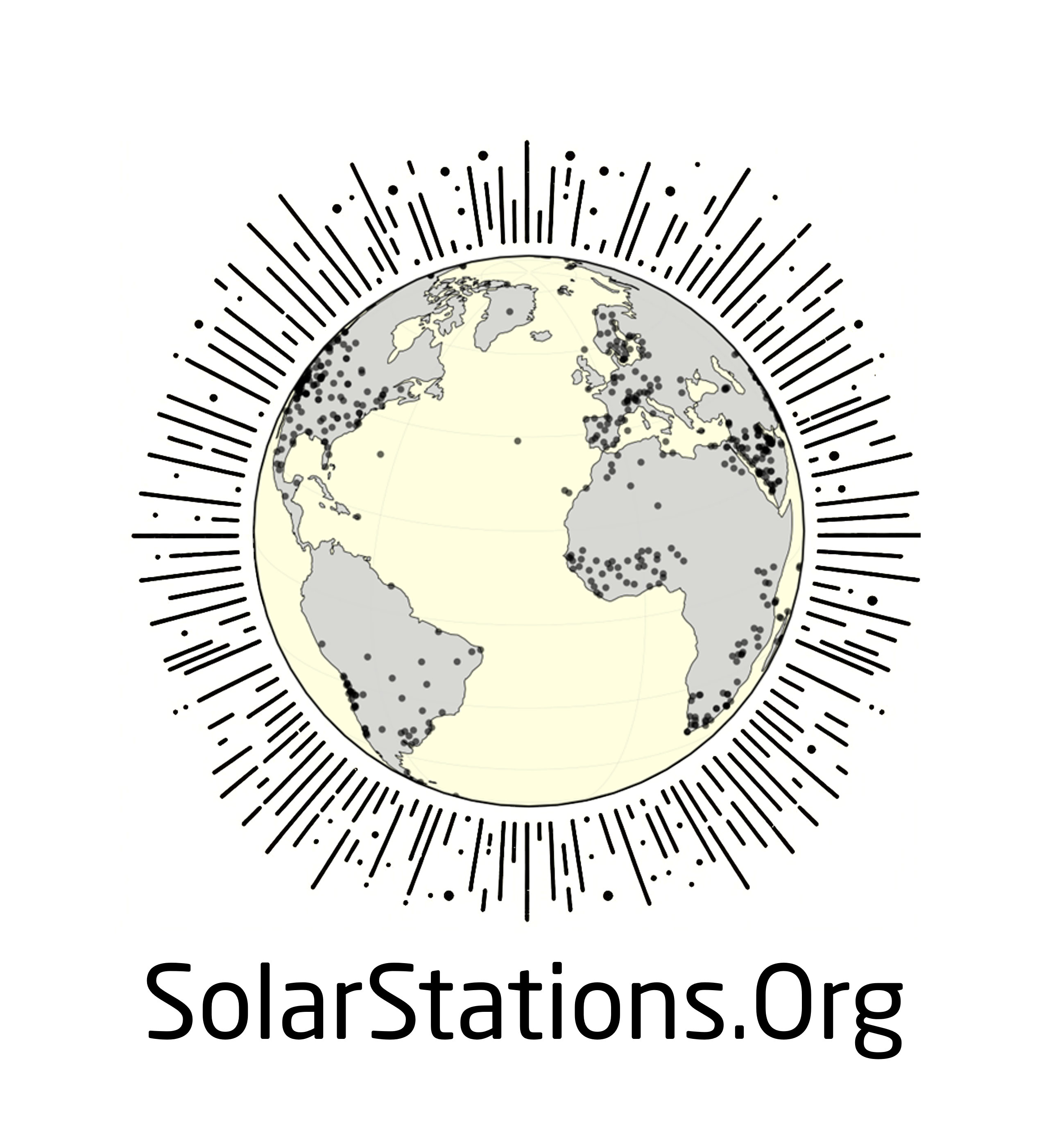Metadata#
The central part of the catalog is the list of stations and their metadata which is displayed on the SolarStations.Org station catalog page. The metadata for each station includes:
Station name
Station abbreviation
Country and state/region
Latitude and longitude (according to ISO 6709)
Elevation in meters above mean sea level
Time period of operation (see below)
Station owner and network (e.g., BSRN, SURFRAD)
Link to the station or network website
Data availability (“Freely”, “Upon request”, “Not available”, or blank if unknown)
Station tier (see station requirements).
Instruments and components (see below)
Long-term annual irradiance (climatology) from NASA POWER (GHI, DNI, and DHI)
Additional information of some of the metadata fields is provided below.
Time-period#
The time period should identify for which years data is available, which is useful for several reasons. Knowing the time period allows for identifying which stations are still active and how long of a historical record of data is available.
A station that started operating in 2013 which does not have data for 2014 and 2017, but is still active would have a time period entry of: 2013&2015-2016&2018-. For BSRN stations the time period should be identified based on the available data, which can be seen here. In case it is unknown if a station is still in operation, a question mark is added at the end of the time period, e.g., 2012-?.
Instruments and components#
Metadata concerning the instrumentation and which components are measured is highly useful when determining if a station is of interest for a particular study. The instrumentation column denotes the type of instruments deployed at a site, from which the measured components can be derived. The possible components are:
Global horizontal irradiance (GHI)
Direct normal irradiance (DNI)
Direct horizontal irradiance (DHI)
Ultraviolet irradiance (UV)
Longwave downwelling irradiance (LWD)
Photosynthetic active radiation (PAR)
The following instrument options are available:
Instrumentation |
Description |
Components measured |
|---|---|---|
|
Unshaded thermopile pyranometer |
GHI |
|
Thermopile pyrheliometer mounted on a solar tracker |
DNI |
|
Shaded thermopile pyranometer mounted on a solar tracker |
DHI |
|
Thermopile pyranometer shaded by a shadowring |
DHI |
|
Pyrgeometer |
LWD |
|
UV radiometer |
UV |
|
Radiometer sensitive to photoactive radiation (PAR) |
PAR |
|
Multi-sensor pyranometer from Delta-T |
GHI/DNI/DHI |
|
Rotating shadowband radiometer/pyranometer |
GHI/DNI/DHI |
Latitude and longitude#
The latitude and longitude of the station should be specified with at least four decimals. This guarantees an accuracy of +/- 5.6 m, which allows users to identify the precise location of a station on a map.
